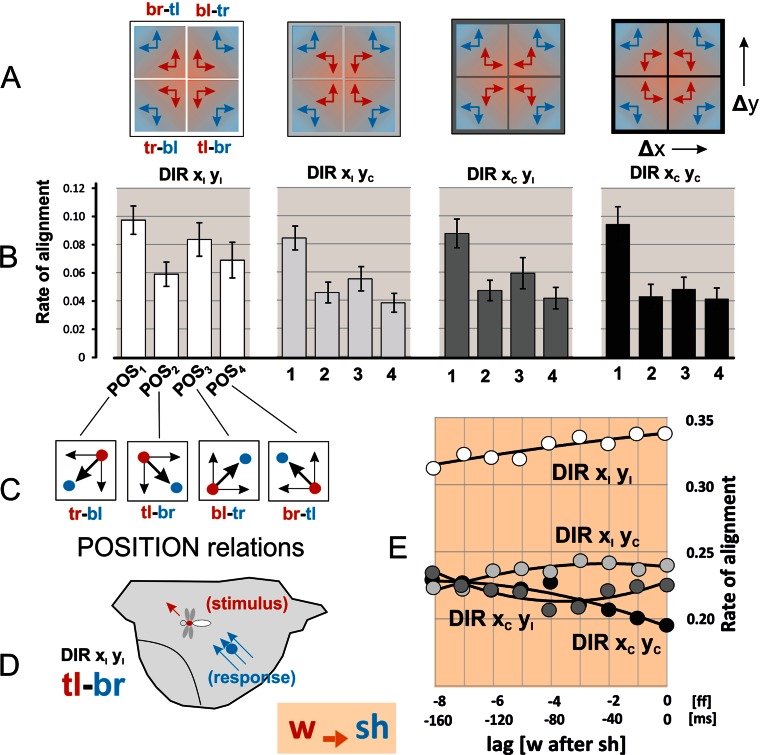Fig. 6.
Directional alignment (w → sh) as assessed with the split-component method. This approach distinguishes four directional conditions of the wasp (coded red) and the gravity centre of the shimmering wave (coded blue). a The sketches explain the pairs of positional deviations (Δx and Δy) given for the four categories of alignments with ipsi-directional (code I) and contra-directional (code C) dispositions (as displayed in panel B). b Ordinate, alignment rates (DIR xI, yI, white bars in the histograms; DIR xI, yC, bright grey; DIR xC, yI, dark grey; DIR xC, yC, black) sorted after four positional relations (abscissa POS1–4, see panel C) summed up to the rate value of 1.0 for each of the sessions investigated (nss = 50); Histogram bars, arithmetical means; vertical lines, SEMs; the empirical data were exemplified for latency conditions of lag = 1. c Four positional relations: POS1: tr-bl; POS2: tl-br; POS3: bl-tr; POS4: br-tl; with t top; r right; b bottom; l left). d The specific constellation tl-br, where the wasp as stimulus was positioned in the given frame at the top-left (red: tl) of the gravity centre of the shimmering wave as responder. Conversely, the gravity centre of the shimmering wave was positioned at the bottom-right (blue: br) of the wasp. e Summarization of alignment rates regarding the four directional relations (DIR1–4): ordinate, the rate of alignment as defined in panel B; circles, medians of alignment rates regarding POS1–4, normalized to 1.0. Abscissa, latency in frames [ff] and milliseconds [ms] between wasp flight as stimulus and shimmering wave as response; regression polynomials: DIR xI yI, R 2 = 0.7927; DIR xI yC, 0.8160; DIR xC yI, 0.7577; DIR xC yC, 0.9187

